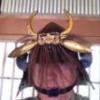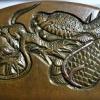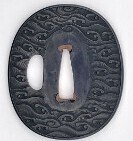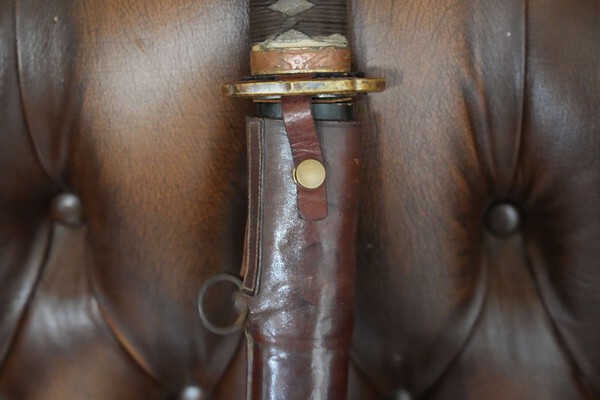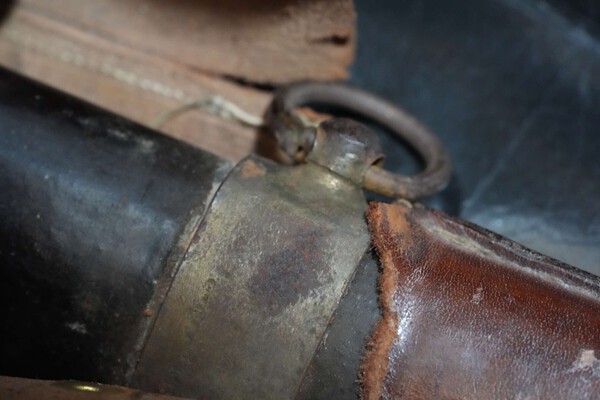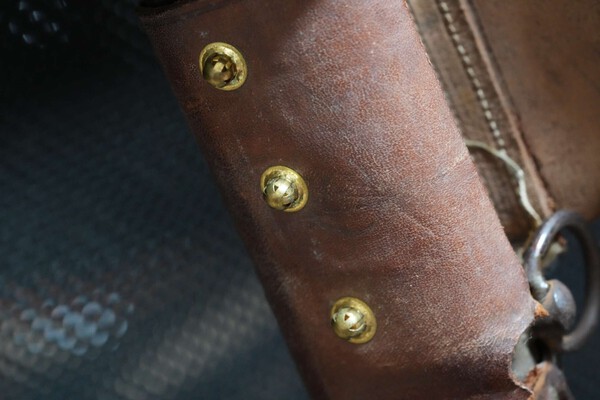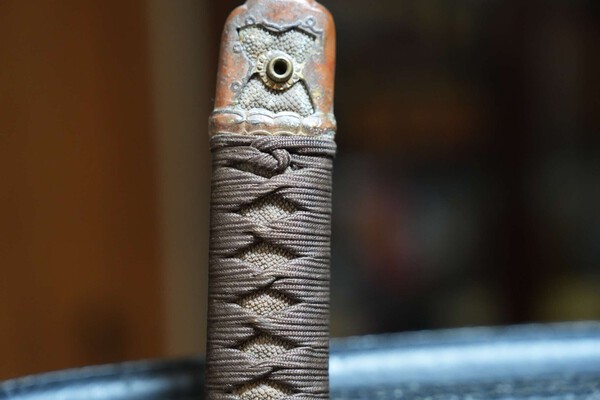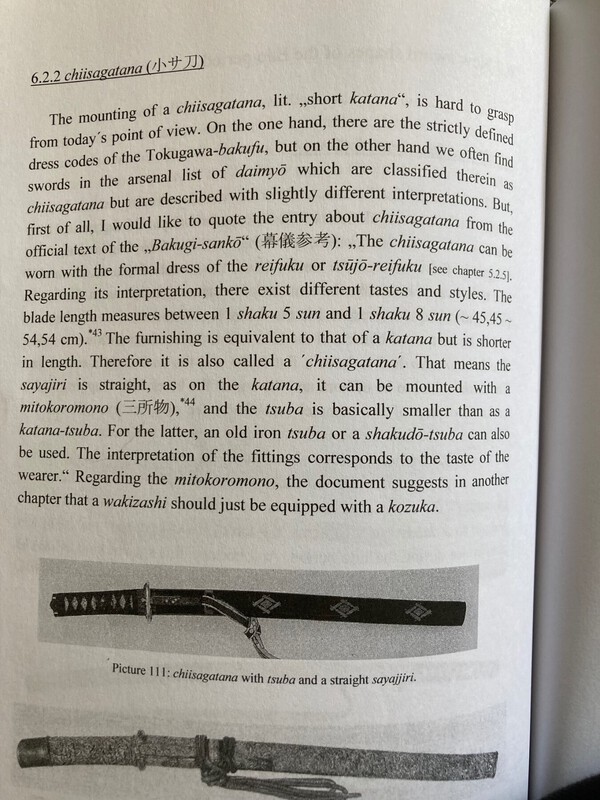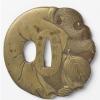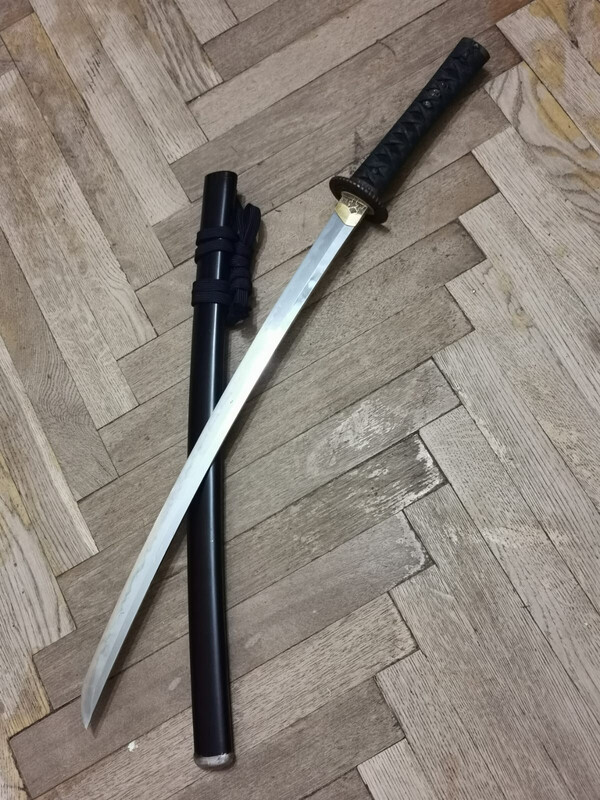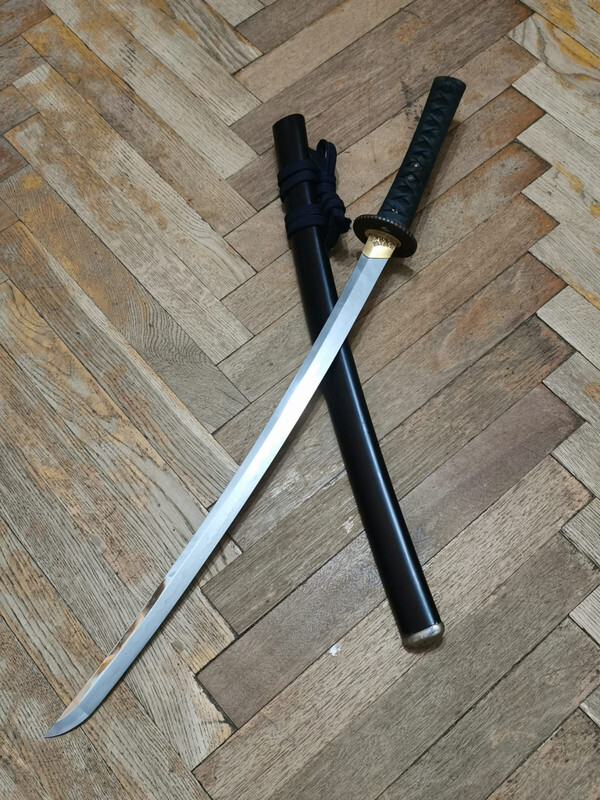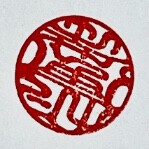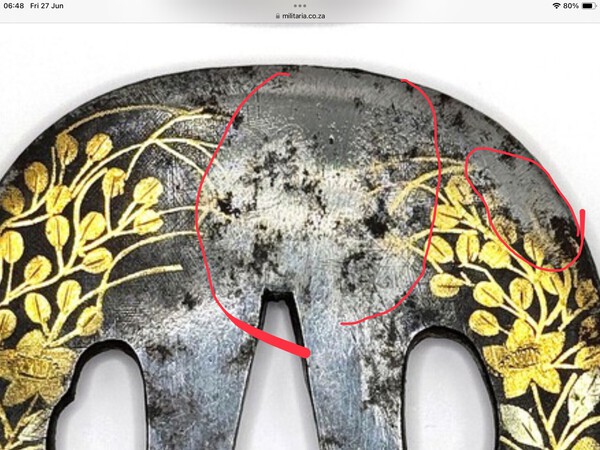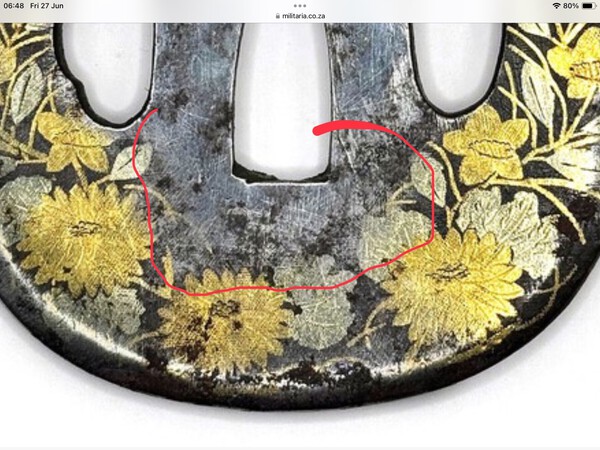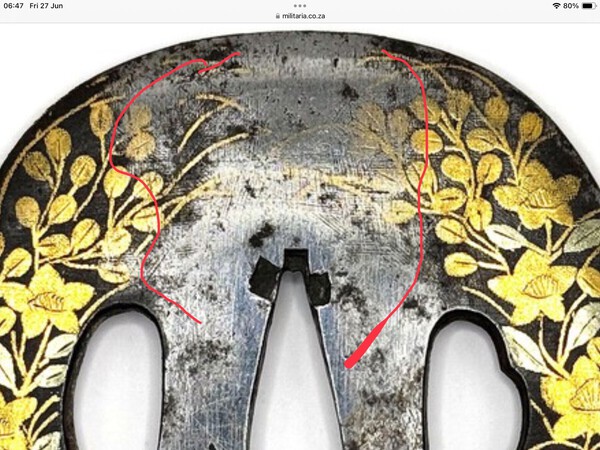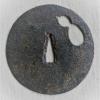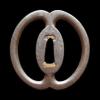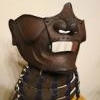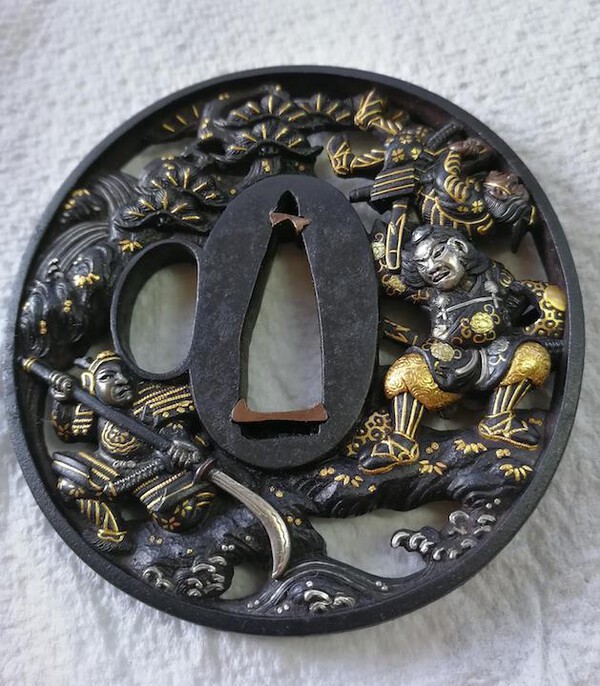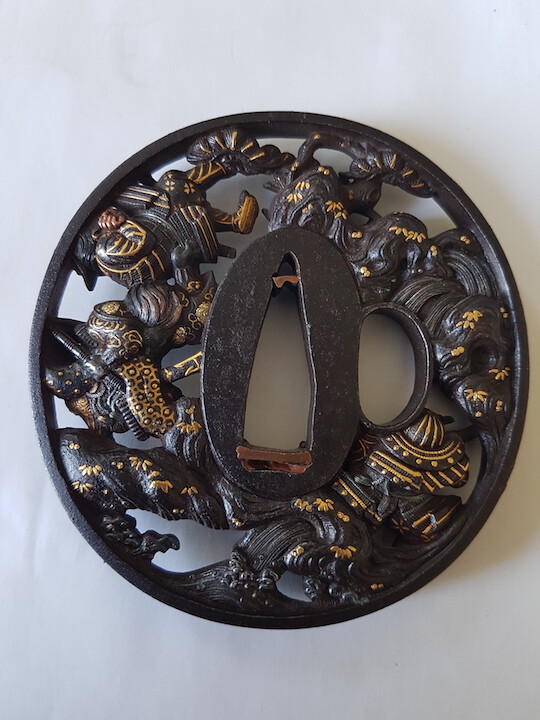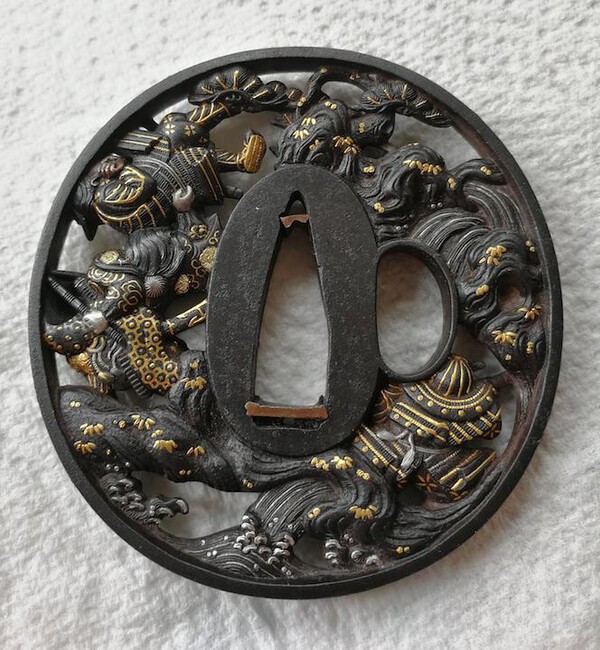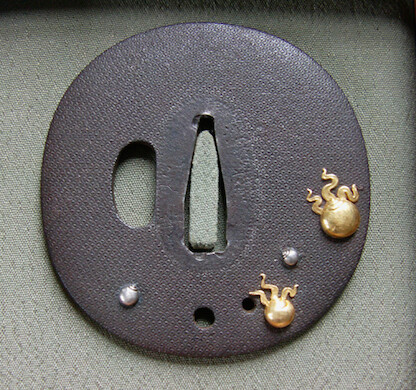Leaderboard
Popular Content
Showing content with the highest reputation on 06/27/2025 in all areas
-
Justyn, I’m sorry to be the bearer of bad news. I wish you well in your dispute with the Auctioneers. If it would help in any way you can use anything I have said…you can quote me exactly and I am happy to email them directly if it will help. Good luck.3 points
-
Hi all. Thanks for the notes. To put this to rest… Matsunoki is right, or so I believe. I have run a couple of simple tests to see if it is silver or polished iron. I can’t find any evidence that it is silver, and when I rub the darker areas with a tissue they come away with iron rust colour, so I am going to assume that it is indeed iron. I have written to the auction house to complain that their description was inaccurate and asking for some action, no idea if they will respond with any except a form email, but we will see… I am sad, because it was a piece that I was quite excited about. It is not a cheap mistake, but I am somewhat sanguine about it. It’s still a piece that I like looking at, and learning is always valuable in the end.3 points
-
Thanks Desmond. I have mentioned this legislation a couple of times on the Forum but I think it is largely going un-noticed and there are going to be many EU collectors with serious trouble on their hands. Swords stuck all over the world but especially in Japan whether with Japanese dealers or for Shinsa. It is bureaucracy gone totally mad. I’m exactly the opposite!…for better or worse! My days dealing in Japanese Art taught me not to hesitate. “The time to buy something good is when you see it” was the advice I was given very early on. When that approach does backfire on you simply sell it, forget it and go buy something else! I remember several instances when I’ve been standing behind someone at a show or a fair. He has picked up something really nice and is pontificating and trying to talk it down. I’m praying “please just put it down and go think about it”….and the utter joy when he puts it down and says he’ll be back in a few minutes…..and the look of horror when I pick it up and say “sold”. It’s dog eat dog out there! Who dares wins (most of the time🙂) I once had a fight break out on my stand at a large show caused by just such an event. Anyway what’s that got to do with anything…..🙂, sorry.3 points
-
I’ve lost access to my original account on the board, so I’m posting from this one. I don’t believe many in the Nihonto community are aware of the major legal changes taking effect on June 28, 2025, which will significantly impact antique collectors who purchase items from outside the European Union. The law in question is the Import Licensing Regulation for Cultural Goods (EU Regulation 2019/880), which was passed in 2019 and is now coming into force. While you can easily find the full legal text online, here’s what it essentially means in practice. From that date forward, any cultural good over 250 years old, regardless of value, will require an import licence to enter the EU. This licence must provide documented proof that the item was legally exported from its country of origin. The application process can take up to five months, and there’s a major catch: the licence can only be applied for by someone who holds an EU EORI number, which is currently issued only to VAT-registered businesses. In other words, private individuals will not be able to apply. A further complication is that the licence won’t be issued simply because the item is genuinely an antique. The key requirement is evidence of legal exportation from the country of origin. This means that if you purchase a Japanese sword from a UK-based dealer or collector, they must be able to prove it was legally exported from Japan in the first place. If you’re buying directly from Japan, you’ll need proper documentation to show that the export is lawful. This could include official permission from Japan’s Agency for Cultural Affairs or a formal invitation for customs inspection of second-hand goods. The aim of these regulations is to combat the illegal trade in cultural property. EU customs authorities are expected to assume that buyers may attempt to misdeclare the item’s nature, age, or period to avoid the licensing requirement—doing so is illegal and punishable by law. Furthermore, the applicant for the import licence must sign a legal declaration affirming the accuracy of all provided information. Due to Brexit, individuals and businesses based in the UK are not subject to this regulation. Antique imports into the UK do not require an EU licence, though they are still subject to 5% import VAT. For VAT-registered UK businesses, that VAT can be reclaimed. Personally, Brexit has spared my business from what would otherwise be a very difficult situation. Unfortunately, for dealers and collectors based within the EU, these new requirements pose serious obstacles. Professional antiques dealers who are members of CINOA are already aware of these developments, as CINOA has been actively lobbying against Regulation 2019/880. More information can be found on their website: https://www.cinoa.org. Dealers based outside the EU who wish to bring antiques into the Union—such as those affiliated with JAF—will need to obtain a temporary import licence. This process is relatively straightforward and familiar to those who regularly exhibit at fairs like TEFAF. However, if any of the imported items are sold, they must then have a full 2019/880 import licence before they can be transferred to the buyer and the buyer must have a EU EORI number. Dealers operating within the EU must also secure this licence to import items, regardless of whether the goods are for resale or exhibition. In practical terms, Regulation 2019/880 is deeply flawed and largely unworkable. It threatens to severely limit, if not entirely block, private collectors from purchasing antiques from outside the EU. While there is hope that a resolution or adjustment to the regulation may be found, for now it is crucial that the community is fully informed and prepared. Purchasing nihonto from overseas into the UK has become increasingly difficult. One of the main challenges is that couriers are no longer willing to handle weapons unless the sender has a special exemption and is recognised as a certified specialist packer. Adding to the complexity, many airlines are now adopting similar policies and refusing to transport weapons altogether. Given these restrictions, collectors are left with few options. Realistically, you may need to either source your nihonto domestically or consider exploring a different hobby altogether like buying armour! regards David3 points
-
Dear Pierre. Some thoughts for you to ponder, or ignore if you feel so inclined. When Tozando sold this piece their description included the following. "The name Harushige is engraved on the nakago. Harushige is famous as a swordsmith of the Soshu school in the Muromachi period, and this tanto is from the Shinto period. All the koshirae fittings for the tanto are from that period and are very tasteful. It is also equipped with a kozuka, making it a complete package for a tanto." That is somewhat ambiguous as it draws the mind towards Soshu without claiming it. They say that it is Shinto but as we know there are no smiths that fit the bill in the Shinto period. If we follow their description then the Meikan more hypothesis becomes a factor. However I tend to agree with Kirill for the following reasons. Tanto in Shinto are rare as a starting point. This tanto exhibits no signs of the effects of polishing around the machi which are well defined and quite deep. The mei shows no signs of wear, the tagane ato are still apparent in the photographs. The crispness of the nakago, the nakago jiri and the colour do not speak of Shinto to me. Given these factors my conclusion would be that this is by the Shinshinto smith Shinryushi Harushige, the one that Bobby mentioned. My library doesn't add much except that he is in Hawley as HAR95. Whatever your conclusions enjoy this tanto and do let us know what the results are if you do send it to shinsa. All the best.3 points
-
Throwing the baby out with the bath water. Feel sorry for you guys. I'm afraid this will do more harm to honorable people than the wrongdoers. Government can't seem to understand. Always allowing a few bad apples spoil the bunch. I am sure antiques collectors will be organizing to state their case, as this goes well beyond nihonto.2 points
-
2 points
-
Need to draw up a list of firm conditions first, lessons we learned from that last time around.2 points
-
Might have to be the arms fair in future, trouble is, im not an on the spot purchase kind of dude. Personally, like to see something, study exactly what it is for a few days, then pull the trigger. The last time i saw something on the spot at a fair was the matchlock the other week when i was on to you guys Don't know how many papered swords one comes across at the Birmingham arms fair?, that would help. Its choice though, limited.2 points
-
Smart move Lewis. We should never have left the EU…..we were conned into voting that way. I hope we rejoin one day one way or another.2 points
-
You're really not selling a possible return to Blighty. Probably explains why I've worked so hard to get permanent EU residency. Should only be a question of a few weeks/months now.2 points
-
Birmingham Arms Fair Alex…….full of lovely stuff! I’ve got 5 swords left🙂🙂 and a few guns. Shame about the matchlock….☹️2 points
-
I have contacted a few people but to be honest, not too sure i want the hassle now. The UK is an hard place to live at the moment, though sure there are worse places. The dealer suggested find a new hobby. Already have a few but this was the main interest. Perhaps higher end tsuba, dunno. Though saw a thread where folks were even concerned with those and descriptions for customs. FFS, what a world.2 points
-
Are you sure that reads Harushige? Not saying that it isn't, but did you find examples of non-standard versions of "-shige" like that? The cut of the nakagojiri looks to be iriyamagata, said to be Yamato, then Hokurikudo and (later) Shinto, according to Nagayama Kokan. The choice of tsuba gives me a Mino feel to the package. Love the moon above the clouds.2 points
-
2 points
-
2 points
-
2 points
-
Resurrecting this thread. According to Markus and from the interpretation of "Bakugi-Sanko" (see below. image from "Japanese sword mounts" by Markus. "Blade length measures 1 Shaku 5 sun to 1 shaku 8 sun (45cm to 54cm)" That is not tanto/Sunnobi kind of size, as mentioned by Guido at the beginning of this thread. Just happen to be going over this as seen the term years ago and was wondering whether it was a term for Ubu swords of a certain size that are smaller than katana (as in mounts). Going from memories, always assumed they were longer than average wakizashi with longer nakago. There was Samurai that preferred smaller Katana, obviously, by the number of waks we see that are mounted like Katana, but shorter than your pedantic 60cm nagasa. Semantics lol2 points
-
Absolutely not! I think that we fail to comprehend the extent and speed of the revolution in Japan post Meiji restoration. I have been looking for the source and have so far failed to find it but at least one English collector of note first encountered tsuba when walking along a quay in London and a barrel slipped from the crane sling that was unloading it, crashed and burst spilling piles of tsuba. In other words tsuba were literally being sold out of Japan by the bucketful. The early European collections were formed from this vast array of tsuba, those who were discriminating enough trawled the sea of objects and selected, whether in Japan, like Mosle, or in European cities. The famous myth of Japanese prints igniting the European art world having been discovered as packing material in shipping boxes is analogous. The significance of people such as Bing with his gallery and extensive holdings gives us some idea of the fervour with which all sorts of Japanese art was being sought after. (Don't get me started on the relationship between Japanese art and Art Nouveau!) When the supply began to dry up the Japanese started to crank out cast copies to supply the demand, desperate not to lose the market and to support a struggling economy in transition. The quality of these is low and they should be fairly easy to spot compared with the rather more sophisticated copies that we are seeing now. Well Paris, your tongue in cheek remark gave me the opportunity to vent some of this, I do realise that it is not what you were after but perhaps some of it might be of interest to someone. To conclude, there are quite a few of this class of tsuba going the rounds. I am quite happy to date these as Meiji or later, certainly post Haitorei, nothing Edo about them. Now dismounting from my high horse and bidding you a good evening. All the best.1 point
-
These tsuba with a basket backround are typical of shoami school. Please find herewith a good exemple:http://ricecracker.com/inventory/822_tsuba_higo_basketweave/822_tsuba_basketweave.html1 point
-
The shiny one may well have a wax coating or sometimes oil is used. It’s nothing to worry about and I’d leave it alone. Sometimes you can do more harm than good trying to clean things. Both tsuba have what looks like nunome zogan work on the rims and that is easily damaged so again, leave them alone. The shine may fade with time. Keep them dry and check for fresh rust every now and then As background reading just put “basket weave tsuba” into the search box on this forum, click on “everywhere” and I’m sure you’ll find lots to think about and compare to.1 point
-
Old Kicho papers. Almost always you should disregard them. Edit: To explain, there was a major scandal in the 1970's where it was found out that there was Yakuza meddling in the papering process that resulted in probably thousands of blades getting papers that should have not. This scandal nearly broke the NBTHK and forced a completely new papering system and rule set to be devised so as to de-legitimize the old ones. When you see old Kicho papers, you should dismiss them as force of habit and judge the blade on its own merits. Not to say that all old papers aren't correct; but by now, most blades have been repapered in the new system and thus what is left is highly likely to be false.1 point
-
What can one do to HELP move this along to publishing?????? It's possible I could asist with upfront $$. I also have done considerable Tect Writing for the Biotech field, if I can be of any further help with basic formtatting and proof-reading ... although clearly my knowledge of Japanese terms is NON-existant without Google Translator, LOL!1 point
-
1 point
-
Ah, thanks, Colin, the 21st might just be workable....1 point
-
Thank you very much for your input, gentlemen. Rest assured Geraint, I ignore none of the comments kindly given here. However, I still wonder about the second kanji on the nakago, for Shinryūshi Harushige is written as 春茂 ? As for presenting the tantō for shinsa, I'll have to wait till next year's Japan Art Fair to see Hataya Daisuke-san, or sooner if an NBTHK meeting takes place in a neighbouring country. With the Belgian laws on sending "blade weapons" by post or courier, that is the only option left. Anyway, if a shinsa takes place and yields some interesting result, I'll share it here. Thanks, Pierre1 point
-
Anyone seen this stamp before? Looks like 山 and is encircled like the matsu stamp. Also resembles モ since it appears the top two strokes (as currently oriented) extend toward the nakago mune. It’s on a star stamped sword by the Niigata smith Uemura Sadakiyo. I tried searching “yama” but kept getting results for the “w” stamp.1 point
-
It's getting more and more difficult, to know where to be, and how to be able to live legally and permanently there, and yet still maintain your options to move back if things go pear-shaped, or if you change your mind. There are so many beautiful places on this earth, but if you put down roots, will you be able to ever move freely again? Try getting permanent residence once more in the UK for example, if you decide you want it, and try buying property there. All my adult life I have dreaded being backed into a corner, that moment where you are rendered out of options, i.e. check-mate. "The home is where the heart is", maybe, but will the authorities allow it? Edit, seeing Alex's reply. I'm like that too, like to take my time over purchases. I even encourage sellers to go ahead and sell what I am interested in, to try and save myself! If I come round again and it's gone, what a relief! If it's still there though, I'll probably buy it. (Brian from what I remember is more of an on-the-spot guy!)1 point
-
At the end of the day I see personal courier services from Japan to Europe being the only viable option. Have you checked to see if the sword you're interested in can be shipped to the local office and then transported in checked luggage. Adds cost and time but certainly possible.1 point
-
We’ll to my (old) eyes the iron surface AND the nunome has been very heavily abraded…..see circled areas in red. The nunome has virtually disappeared and where it remains it is very weak. Also imo the Japanese would never put silver nunome onto a silver(ed) surface…..what would be the point? It would not show up. Not the sort of artistic blunder that the Japanese would ever make. Also imo we can see the remains of deep pitting in several areas especially where the surface has been abraded suggesting very nasty corrosion had existed. Also, in areas where there is no abrasion to the plate or the nunome the surface colour does not suggest tarnished silver, it looks exactly as it should ie patinated iron. Im not trying to score points but if someone is spending substantial money on these things it is useful to understand what we are looking at…..and why it looks as it does….and best not to rely on what any Auctioneer says.1 point
-
Well there's always the Japan Art Fair. And then drive it back across the channel. But I agree it's a sorry state of affairs. I'm fairly late to game and the current and increasing restrictions are cause for concern. At least in Germany it's still fairly easy to import antique nihonto. But for how long......1 point
-
Thanks, Sam. The date is June 1938, so this picture is interesting in light of the fact that the Type 95s were out for some time. I do believe that once the military announced they were going back to samurai-styled swords, there must have been rush to bring out the family blades when the official military gunto were not yet available. The only uniform regulation Nick Komiya could find officially permitting NCOs to carry civil swords was dated 1943. Who knows what guys were doing unofficially.1 point
-
Yep! Matches the mei style of the others in my files. Just couldn't remember who it was. Thanks, Steve!1 point
-
1 point
-
Do you mean two different sets of characters? The top one is kind of double-stamped but I get a feeling of 長春 Choshun in the Japanese reading, Changchun in Chinese.(?)1 point
-
1 point
-
1 point
-
Writing is more consistent with Edo period, in particular Odawara and other Soshu groups did not sign like this around Tembun. They did do on occasion large nijimei with center-right positioning, but the signature will not have deep cut triangular strikes, and the kanji would have a tad more "writing, cursive" rather than "printed, stamped" appearance. There are some schools which began to sign this way especially around 1550-1570. Yasurime - the depth and coloration and not super typical for shinshinto, but while it is not typical kesho type but at the top it does come at two different angles: its not gyaku takanoha where it comes at two angles all the way, it is just the top. This is more consistent with shinshinto (?). If we assume its Edo period, the work, while little is shown, is definitely not shinto type. So I would seriously consider shinshinto as an option.1 point
-
Wanted to share this, but wasn’t sure where to post. Decided to revive this older thread. I’ve got this wartime magazine showing “Horseback slashing attack by students of the Army Preparatory School”. I picked up this magazine at a show because I liked the cover so much - I think I will have it framed. Look closely at his sword. It appears to be a civilian fitted sword and with a leather saya cover. Also, I believe that’s a NCO leather tassel. Just some show and tell, -Sam1 point
-
I think Dirk is correct in his statement. In my opinion, it is a very late TSUBA (MEIJI ?), made in series. Now, probably to remove some corrosion, it has been ground and is heavily damaged. The cross-hatching is irregular and somewhat crudely executed, and does not convey an aesthetic appearance.1 point
-
You could also look at this another way. When did they start coating wooden saya with lacquer? The question is asked here: https://intojapanwaraku.com/rock/craft-rock/45531/ Part of 小菅さんの the expert's answer is that some very old sword furnishings in the famous Shoso-in storehouse are lacquered, and that was in order to preserve the wood. Conversely, the article says that uncoated wooden saya have not survived well because of their fragility compared with the iron blade. So it could be that some form of wooden saya, if not quite the refined 朴の木 hou-no-ki magnolia saya that we are used to seeing today, was used before anything else, or at least in parallel with other possible materials.1 point
-
1 point
-
Steve: The left column should be the manufacturer (sorry, don't know the name), the middle column is the date (looks like Showa 17 [1943]), and the right column I believe is the size chu meaning medium. John C.1 point
-
Frank, looks like a KATANA blade (SHOWA-TO) in a modern ITOMAKI no TACHI KOSHIRAE.1 point
-
1 point
-
Thank you Alex, much appreciated.1 point
-
1 point
-
RJT rules say RJT smiths had to sign and date their swords themselves.1 point
-
1 point
-
1 point
This leaderboard is set to Johannesburg/GMT+02:00

